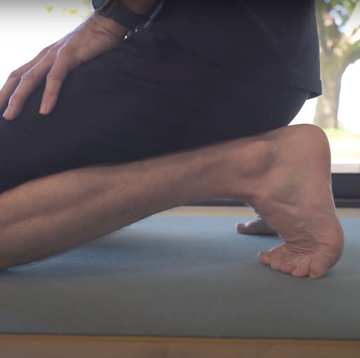The only thing runners fear more than rabid dogs and toilet emergencies is getting hurt. An injury means taking a break, and runners hate the thought of losing fitness, gaining weight or missing an endorphin fix. But what if you knew what injuries you were likely to face – before a single symptom struck?
Sports physician Jack Taunton and exercise scientist Michael Ryan, both recreational runners from the University of British Columbia, Canada, were studying sports injuries four years ago when they recognised a lack of data linking specific traits – age, weight, gender, foot type – to running injuries. So they decided to conduct research that was later published in the British Journal of Sports Medicine.
"We found that certain injuries were statistically more significant among particular people," says Ryan. "Women are more likely to experience one kind of knee pain – patellofemoral pain syndrome – while men are more likely to experience another – patellar tendonitis."
Ryan and Taunton's findings focus on six injuries and the runners they most commonly afflict. Whether you're in a high-risk group or not, simple training adjustments can keep you safe. These precautionary measures could save you from the dreaded routine of rest and rehab.
Achilles Tendonitis
Foot-strengthening exercises for runners Tenderness in your lower calf near your heel that usually strikes when you push off your toes.
Who's at risk? Men with a BMI of 25 or higher (a man who is 5'10"and weighs 12.5 stone [80kg], for example) who run a nine-minute-per-mile pace or faster.
Why The Achilles absorbs several times your body weight with each stride. A faster pace and additional body weight put even more stress on this tendon.
Prevent it Strengthen your calf muscles (with your toes on a step, lower and raise your heels). Stretch your calves (keep your heel on the ground, lift your toes back towards your shin).
Others at Risk People who regularly run hills (the Achilles has to stretch more on inclines) and who have increased their mileage more than 10 per cent per week (sudden increases in mileage strain the tendon).
Medial Tibial Stress Syndrome
Foot-strengthening exercises for runners Foot-strengthening exercises for runners.
Who's at risk? Runners whose feet roll inward excessively (overpronate).
Why The posterior tibial tendon, the connective tissue that gets sore with shin splints, runs into the arch of the foot. If your feet roll inward, this tendon has to work extra hard to counteract that motion.
Prevent it Wear motion-control shoes. Strengthen your calves (hold dumbbells while doing toe raises). If you've had daily shin pain for longer than a month, see a doctor for a bone scan to rule out a stress fracture.
Others at Risk Why should runners focus on dorsiflexion.
Subscribers can access more advice in How to tackle tight hamstrings. If you'd like to subscribe, you can enjoy your first three issues for £3 by subscribing online now.













